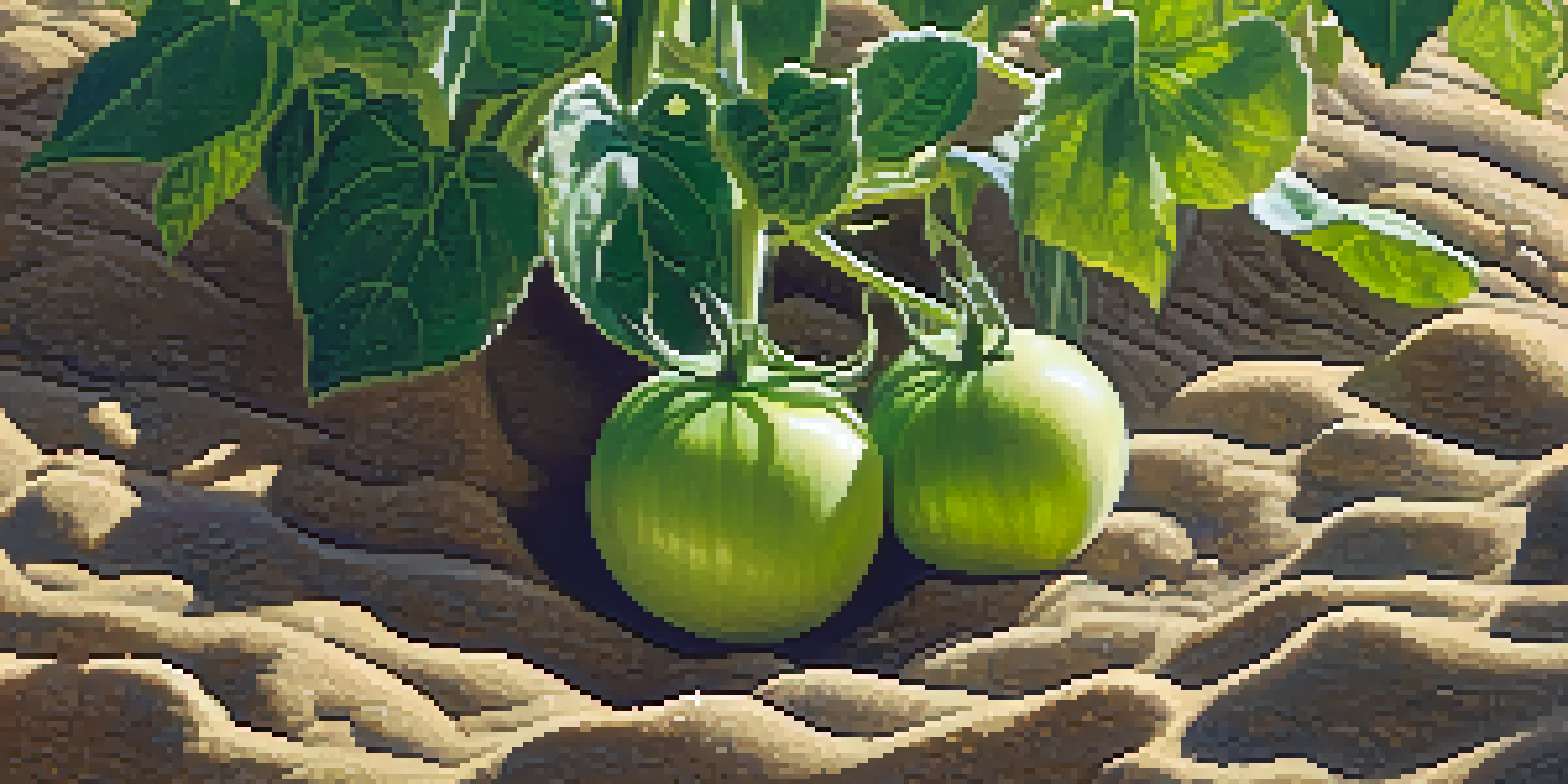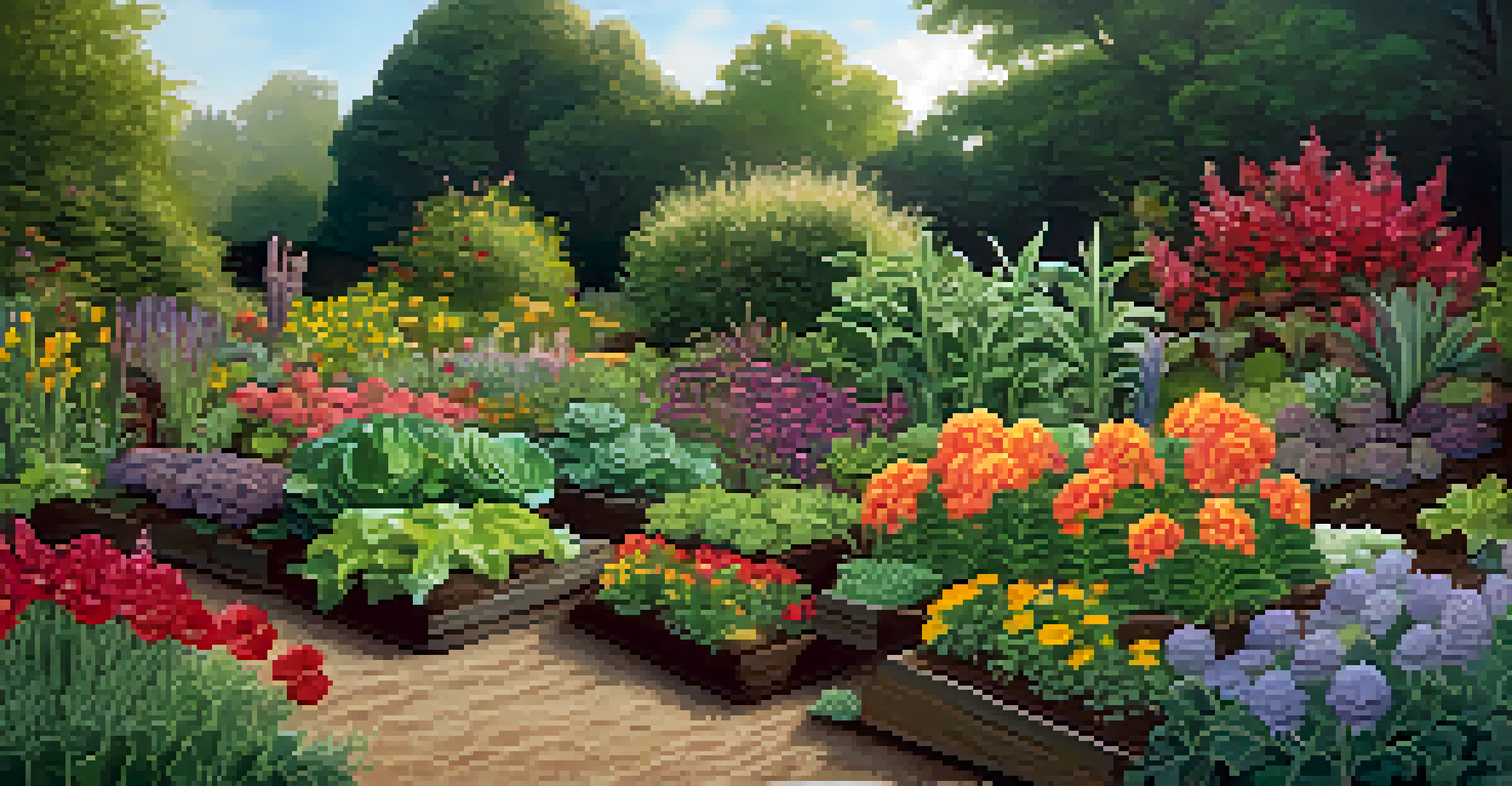Understanding Soil Types for Optimal Plant Growth

Why Soil Type Matters for Plant Growth
Soil type plays a crucial role in the health and growth of plants. Different plants thrive in different soil conditions, which can significantly affect their development. Understanding the characteristics of various soils helps gardeners and farmers make informed choices about what to plant and where.
The health of soil is the foundation of agriculture. It’s vital for sustenance, nutrition, and the overall health of our planet.
For instance, sandy soils drain quickly but may not retain nutrients well, making them less suitable for some crops. On the other hand, clay soils hold moisture but can become compacted, restricting root growth. By recognizing these differences, you can tailor your gardening practices to optimize plant health.
Ultimately, knowing your soil type enables you to create the best environment for your plants, ensuring they receive the right nutrients and moisture levels for robust growth.
The Four Main Soil Types Explained
Soil can be classified into four main types: sandy, clay, silt, and loamy. Sandy soil is gritty and drains quickly, while clay soil is dense and retains moisture. Silt, which is smooth and holds nutrients well, sits between the two, and loamy soil, often considered ideal, is a balanced mix of all three.

Each type has its unique characteristics and advantages. For example, sandy soils warm up quickly in spring, making them great for early planting. Conversely, clay soils can retain moisture during hot spells, providing a water source even in dry conditions.
Soil Type Affects Plant Health
Different soil types influence plant growth by affecting drainage, nutrient retention, and moisture levels.
Recognizing these types will help you match plants to the right soil, leading to better yields and healthier gardens.
Sandy Soil: Characteristics and Benefits
Sandy soil is made up of larger particles, which gives it a loose texture and excellent drainage capabilities. This type of soil warms up quickly in the sun, making it ideal for growing heat-loving plants like tomatoes and peppers. However, its quick drainage can also mean nutrients wash away easily.
Soil is a living system, and a healthy soil is the basis for healthy food, which in turn leads to healthy people.
To maximize the benefits of sandy soil, regular amendments with organic matter, such as compost, can help improve nutrient retention. This practice not only enriches the soil but also enhances its ability to hold moisture, creating a more favorable environment for plants.
In essence, while sandy soil has its challenges, with proper care and management, it can support a vibrant garden full of thriving plants.
Clay Soil: Advantages and Challenges
Clay soil is composed of very fine particles, making it dense and heavy. This type of soil retains moisture exceptionally well, which can be beneficial during dry spells. However, its compact nature can lead to poor drainage, causing root rot if water accumulates too much.
To improve clay soil, incorporating organic matter can help break up compacted areas and improve aeration. Adding mulch can also prevent surface crusting and promote better moisture retention, making it easier for plant roots to breathe.
Loamy Soil is Ideal for Gardening
Loamy soil combines the best features of sandy, clay, and silt soils, making it suitable for a variety of plants.
Understanding how to manage clay soil can turn its challenges into advantages, allowing you to grow a variety of plants successfully.
Silt Soil: The Nutrient Powerhouse
Silt soil is known for its smooth texture and high nutrient content, making it a favorite among gardeners. Because it retains moisture and nutrients better than sandy soil, it's often very conducive to plant growth. Many vegetable crops, like carrots and lettuce, thrive in silt soil due to its fertile qualities.
However, silt soil can become compacted easily, which may hinder root development. To counteract this, it's essential to incorporate organic matter regularly to keep the soil loose and aerated. This will help maintain its nutrient-rich status while ensuring your plants have room to grow.
In summary, while silt soil is an excellent choice for many plants, proper management is key to maintaining its health and productivity.
Loamy Soil: The Ideal Choice for Most Plants
Loamy soil is often considered the gold standard for gardening, as it combines the best features of sandy, clay, and silt soils. With a balanced mix of these soil types, loamy soil offers excellent drainage, nutrient retention, and moisture-holding capabilities, making it suitable for a wide variety of plants.
This versatility means that whether you're growing flowers, vegetables, or shrubs, loamy soil can support your gardening efforts. Regularly adding organic matter can enhance its properties, ensuring it remains fertile and well-draining.
Amending Soil Enhances Growth
Adding organic matter and other amendments can improve soil properties, leading to healthier plants and better yields.
Ultimately, if you're looking to create a thriving garden, investing in loamy soil or amending your existing soil to achieve this balance is a wise choice.
Testing Your Soil: A Simple Guide
Before planting, it’s essential to test your soil to determine its type and nutrient levels. You can do this with simple DIY methods, such as the jar test, which involves shaking soil with water and observing the layers that settle. Alternatively, many local garden centers or agricultural extensions offer soil testing services.
Understanding your soil's pH, nutrient content, and type will guide you in selecting suitable plants and amendments. For example, if your soil is too acidic, you might need to add lime to create a more hospitable environment for your plants.

By taking the time to test your soil, you set the foundation for a successful garden tailored to your specific growing conditions.
Amending Soil for Optimal Growth
Once you know your soil type, you can amend it to improve its properties and support plant growth. Common amendments include compost, peat moss, and perlite, which can enhance drainage, nutrient retention, and aeration. These additions not only benefit your plants but also help maintain a healthy ecosystem in your garden.
For example, adding compost can enrich both sandy and clay soils, making them more productive and supportive of plant health. Similarly, using mulch can help regulate soil temperature and moisture levels, promoting a more stable environment for roots.
In conclusion, amending your soil based on its type and your plants' needs is vital for achieving optimal growth and a flourishing garden.